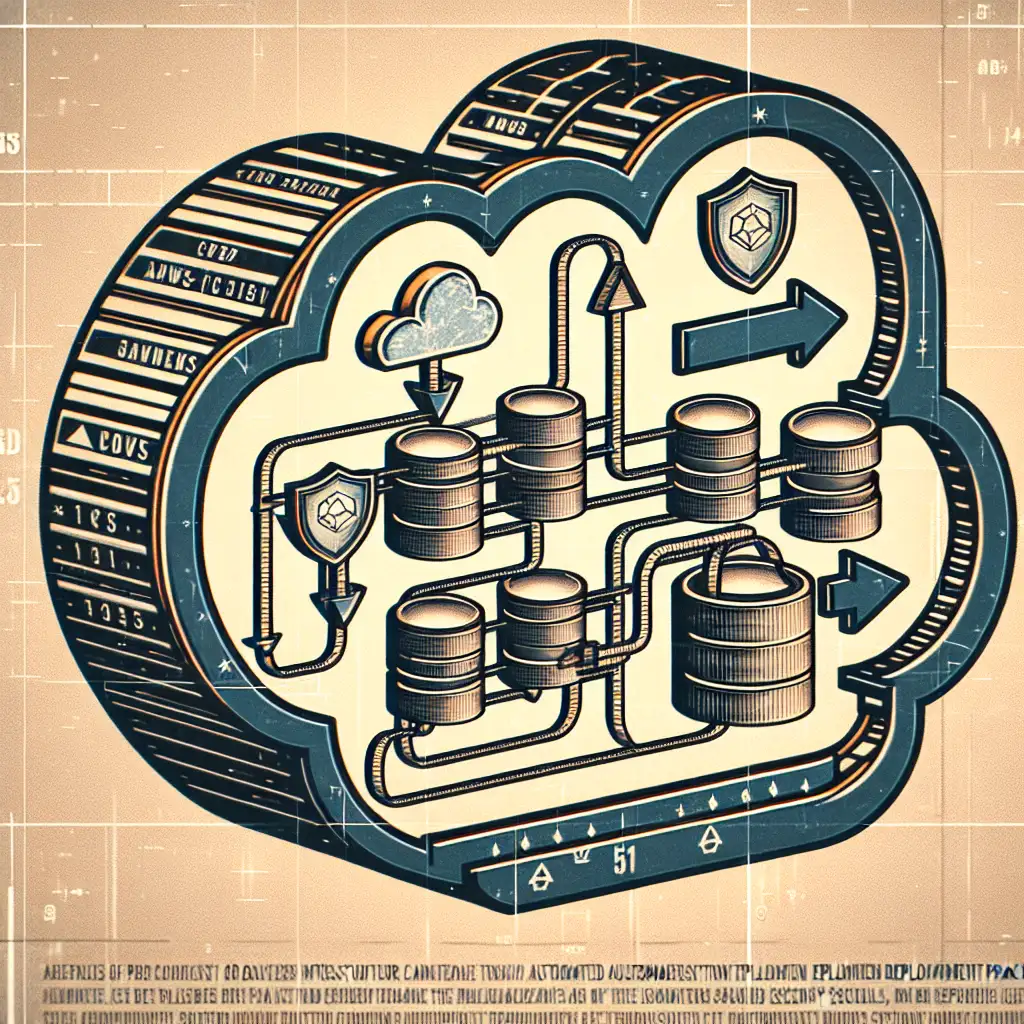Streamlining Docker Deployment to AWS: Beyond the Basics with Automation and Security Best Practices
As cloud adoption surges, mastering a secure and automated Docker deployment pipeline on AWS is crucial for reducing downtime, optimizing resource use, and safeguarding containerized applications—key factors that define reliable and scalable production environments.
Dive into the overlooked operational realities of deploying Docker containers on AWS—why 'just getting it running' isn’t enough, and how integrating automation and security from the start becomes your strongest competitive advantage.
Docker makes it easy to package applications and their dependencies into lightweight containers that run consistently anywhere. AWS provides a robust infrastructure to host these containers at scale. But in real-world production environments, the goal isn’t merely to deploy containers—it’s to deploy securely, reliably, and repeatably with minimal downtime.
In this practical guide, I’ll walk you through the steps to streamline Docker deployment to AWS, focusing on how to:
- Automate your deployment pipeline to reduce human errors and accelerate updates
- Integrate security best practices from build through runtime
- Optimize resource use with efficient configuration
If you’re already comfortable spinning up containers on AWS, this post will help you go beyond just "getting it running" and move toward a professional-grade setup your team and users will thank you for.
1. Choose Your AWS Deployment Strategy: ECS, EKS, or EC2?
The first major design decision: where/how will you run your Docker containers on AWS?
- Amazon ECS (Elastic Container Service): A managed container orchestration service that simplifies running containers without managing infrastructure.
- Amazon EKS (Elastic Kubernetes Service): A managed Kubernetes control plane if you need advanced orchestration features Kubernetes offers.
- Docker on EC2 Instances: Managing Docker directly on EC2 if you want full control but at the cost of more manual management.
For most projects aiming to streamline deployment while leveraging native AWS automation and security, ECS with Fargate (serverless compute) is often the sweet spot. You write your Dockerfiles, push images to ECR (Elastic Container Registry), and deploy tasks without juggling servers.
2. Automate Docker Image Build and Push with AWS CodePipeline & CodeBuild
Manual builds and pushes increase chances of inconsistent images and delays.
Example setup using CodePipeline + CodeBuild:
- Your source repo is hosted on GitHub or CodeCommit.
- Changes to your app trigger AWS CodePipeline.
- CodeBuild runs a build spec that:
- Builds the Docker image
- Tags it with the git commit hash and
latest - Pushes the image to AWS ECR
Buildspec example (buildspec.yml):
version: 0.2
phases:
pre_build:
commands:
- echo Logging in to Amazon ECR...
- aws ecr get-login-password --region $AWS_DEFAULT_REGION | docker login --username AWS --password-stdin YOUR_AWS_ACCOUNT_ID.dkr.ecr.$AWS_DEFAULT_REGION.amazonaws.com
- REPOSITORY_URI=YOUR_AWS_ACCOUNT_ID.dkr.ecr.$AWS_DEFAULT_REGION.amazonaws.com/your-app
- IMAGE_TAG=$(echo $CODEBUILD_RESOLVED_SOURCE_VERSION | cut -c 1-7)
build:
commands:
- echo Building Docker image...
- docker build -t $REPOSITORY_URI:$IMAGE_TAG .
- docker tag $REPOSITORY_URI:$IMAGE_TAG $REPOSITORY_URI:latest
post_build:
commands:
- echo Pushing Docker images...
- docker push $REPOSITORY_URI:$IMAGE_TAG
- docker push $REPOSITORY_URI:latest
artifacts:
files: '**/*'
This ensures your Docker images are built consistently on every code change with zero manual involvement.
3. Secure Your Docker Images and Pipeline
Security begins at build time—ensure your images don’t contain vulnerabilities:
- Use minimal base images (e.g.,
alpineor official language runtimes). - Scan images with tools like Amazon ECR image scanning or third-party tools (Trivy, Clair).
- Keep dependencies up-to-date.
- Store secrets outside containers (avoid baking credentials into images).
Next, secure your deployment pipeline:
- Use IAM roles with the least privileges for CodeBuild and ECS tasks.
- Encrypt images and data at rest with AWS KMS.
- Apply AWS Secrets Manager or Parameter Store to inject environment secrets into your containers at runtime without hardcoding.
4. Automate Deployment with ECS and AWS CloudFormation / CDK
With images pushed securely, automate your ECS deployment to enable zero-downtime updates.
Here’s a simple example of an ECS task definition snippet using Console or infrastructure as code (IaC):
{
"family": "your-app-task",
"containerDefinitions": [
{
"name": "your-app-container",
"image": "YOUR_AWS_ACCOUNT_ID.dkr.ecr.$AWS_DEFAULT_REGION.amazonaws.com/your-app:latest",
"portMappings": [{ "containerPort": 80, "hostPort": 80 }],
"essential": true,
"environment": [
{ "name": "ENV_VAR", "value": "value" }
],
"logConfiguration": {
"logDriver": "awslogs",
"options": {
"awslogs-group": "/ecs/your-app",
"awslogs-region": "$AWS_DEFAULT_REGION",
"awslogs-stream-prefix": "ecs"
}
}
}
],
"requiresCompatibilities": ["FARGATE"],
"networkMode": "awsvpc",
"cpu": "256",
"memory": "512"
}
Pair this with an updated ECS service deployment (using minimum and maximum healthy percent in your service settings) to enable rolling updates that don’t interrupt traffic.
Automating this with AWS CloudFormation or CDK means your infrastructure and deployments become versionable, repeatable, and audit-friendly.
5. Monitor, Log, and Alert on Your Docker Deployments
Deployment automation is useless if you don’t have visibility into your container health.
Best practices:
- Enable CloudWatch Logs for your containers (as above).
- Track ECS service and task metrics in CloudWatch Metrics.
- Set up alerts for failures, high CPU/memory, or unhealthy tasks using CloudWatch Alarms or AWS SNS notifications.
- Use AWS X-Ray to trace requests through your containerized app if applicable.
This visibility ensures you catch issues early and maintain uptime in production.
Conclusion
Successfully deploying Docker containers on AWS at scale requires more than spinning up a container. Security, automation, and observability must be integrated from the start.
To recap:
- Use ECS (preferably Fargate) for easy management of containers on AWS.
- Automate your image builds and deploys with CodePipeline and CodeBuild.
- Incorporate continuous image security scanning before deployment.
- Use infrastructure as code tools like CloudFormation or CDK for repeatable, controlled deployments.
- Monitor your deployments proactively with CloudWatch and alarms.
By streamlining your stack with these best practices, you reduce downtime, optimize resource usage, and safeguard your containerized applications—key to building a truly reliable and scalable AWS production environment.
Ready to dive deeper? Next time we’ll explore adding CI/CD integration for multi-environment promotion, blue/green deployments, and further security hardening.
